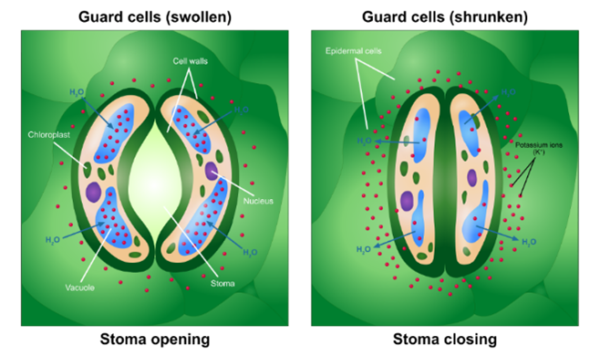The most important issue to California farmers this year is water. Many farmers are not receiving any allocations of water from the Central Valley Project. These growers must rely on poorer quality well water.
Plants have evolved specific adaptations, both internally and externally, to take up, utilize, and conserve water. These adaptions are physiological processes that allow plants to maximize their own water use efficiency (WUE). As crop consultants, we must consider these processes and encourage their expression. This can be accomplished through proper nutrient management.
Certain key nutrients are intimately involved in plant-water relations. The two nutrients most discussed in this regard are potassium and calcium. Potassium is essential to the maintenance of the osmotic potential of tissues. By adjusting the potassium concentration, plants can move water into and out of cells, including guard cells surrounding stomata (Figure 1).

Figure 1
Potassium is also necessary for maintaining xylem flow and turgor-driven cell expansion. A deficiency will result in reduced cell size, leaf area, and overall plant turgor. Conversely, plants supplied with plant-available potassium at the correct time are more drought resistant. More potassium is needed for drought resistance than is needed for optimal yields. That requires a stronger rate of soil applied potassium, and regular foliar applications of low salt, plant available potassium.
Calcium also plays a role in plant-water relations as it is essential to cell membrane stability. Calcium stabilizes membranes which avoids leakage of solutes from cells. For these reasons, during periods of drought and high heat, it is especially important to supply calcium. Foliar applications of a high-quality calcium product are most useful under conditions of low soil water because calcium will not move up the plant without water. These should be applied before and during periods of high heat to help water stressed plants maintain functioning membranes.

